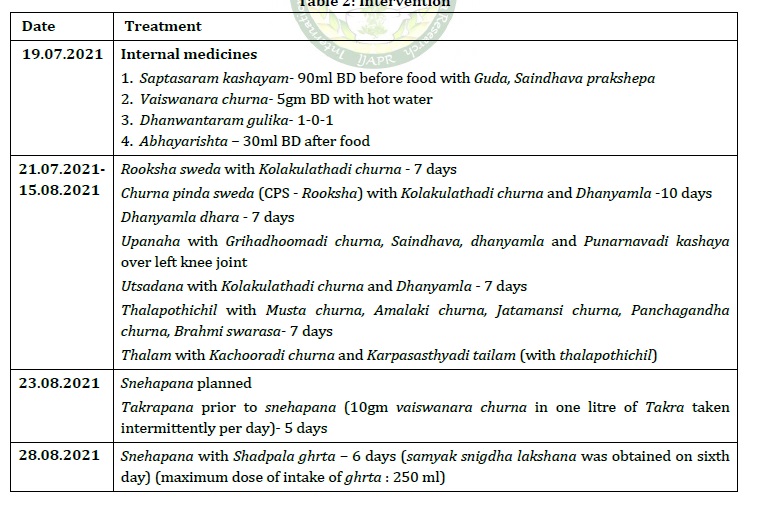Potential Therapeutic Benefits of Brahma Rasayana in the Management of Tuberculous Cerebrovascular Disease - A Case Report
Abstract
Tuberculous meningitis (TBM) is an air-borne infectious disease caused by the bacteria Mycobacterium tuberculosis that affects the central nervous system (CNS). Among all the incident cases of TB, CNS TB represents approximately 1% with TBM as the most grievous among all. The basic pathology in TBM is the inflammation of the arachnoid membrane, the pia mater and the cerebrospinal fluid (CSF). It typically presents as mild fever, headache, anorexia and general debility that progress over one to two weeks to cause severe headache, fever, vomiting, confusion, meningismus and cranial nerve deficits. The most common complications of TBM include hydrocephalus, optico-chiasmatic arachnoiditis, seizures and stroke. Out of these, tuberculous cerebrovascular disease is a common neurological sequelae. This case study elaborates the treatment line and observations made in a 29 year old male patient who presented with hemiparesis and significant sensory deficit following an event of tuberculous meningitis. MRI brain was suggestive of basilar meningitis, optico-chiasmatic arachnoiditis, infarcts and tuberculoma with chest X-ray revealing increased bronchovascular markings in bilateral lung fields. Initially on admission, Deepana-pachana was done followed by snehapana with Shadpala ghrta and Virechana as Sodhana karma. Abhyanga, Ushma Sweda, Churna pinda sweda and Jambeera pinda sweda were successively done allied with physiotherapy. Yogavasti with Vedanasthapana gana as Kashaya and Kalka was done intervened by Anuvasana vasti. Succeedingly, Murdhni taila prayoga and Marsha nasya were also incorporated with periodical neurological, hematological and biochemical assessment. On discharge, Brahmi kalyanaka ghrta and Brahma Rasayana were advised inclusive of physiotherapy.
Downloads

Copyright (c) 2022 International Journal of Ayurveda and Pharma Research

This work is licensed under a Creative Commons Attribution-NonCommercial-ShareAlike 4.0 International License.






